The Cuban population has been going through a complex situation for years. The low birth rate and increasing aging mark the demographic scenario of the island, an equation in which migratory flows are another important variable.
However, the question that gives title to this work is, in reality, impossible to answer exactly. Not only because of the variability of the demographic indicators — even when they keep their trends quite clear — but also because of the complexity of measuring the increasingly frequent entry and exit of Cubans from the country. Also due to current provisions on migration.
This was recognized days ago by specialists on the subject when presenting current data and projections on Cuba’s population to the press. Asked about the impact of emigration on these figures, Juan Carlos Alfonso, deputy head of the National Office of Statistics and Information (ONEI), confirmed that the official calculations and estimates are made taking into account the legal regulations in this regard.
Following these guidelines, people who, even though they are outside the island, maintain their legal residence on it, are officially counted as part of the Cuban population. And, as will be recalled, as regulated by law, a Cuban can stay abroad for up to 24 months without losing his or her resident status in the country. Added to this is the moratorium in force today beyond that time, established during the pandemic.
Therefore, the 11,089,511 inhabitants that Cuba officially had at the end of 2022 should include the around 300,000 Cubans who entered the United States irregularly last year, according to data from the U.S. authorities. And also those who left legally or illegally for that or other destinations at least in the last two years.
Cuba, current migration crisis: characteristics and testimonies (I)
Hence, it may well be assumed that the number of Cubans who are in the country today is actually lower than the official statistics, something that perhaps could have been verified in the census scheduled for last September and postponed — for now — until 2025, due to the island’s economic crisis. It is even presumable that this number is less — and not a little — than 11 million, a figure which, according to official forecasts, will not drop for a couple of years.
Even so, even with the margin of masking that derives from this situation, the Cuban demographic panorama is marked by the sustained decrease of the population for several years, with more deaths than births, a fertility rate that is also decreasing and a degree of rising aging. All of this entails present and future tensions in Cuba’s already tense socioeconomic scenario.
Having said this, and without losing sight of what has already been explained about the guidelines for calculating official data, OnCuba proposes a look at the main demographic indicators of the country, based on recent data offered by ONEI. In a second work, we will provide future projections of the island’s population, based on a study carried out on the subject by Cuban researchers.
Finally, for a better understanding of some of the indicators reviewed, we invite you to consult a small glossary included at the end of the text, after the graphs.

CURRENT CHARACTERISTICS /
– Demographic indicators similar to those of developed countries
– Sustained tendency toward population decrease
– Notable level of demographic aging
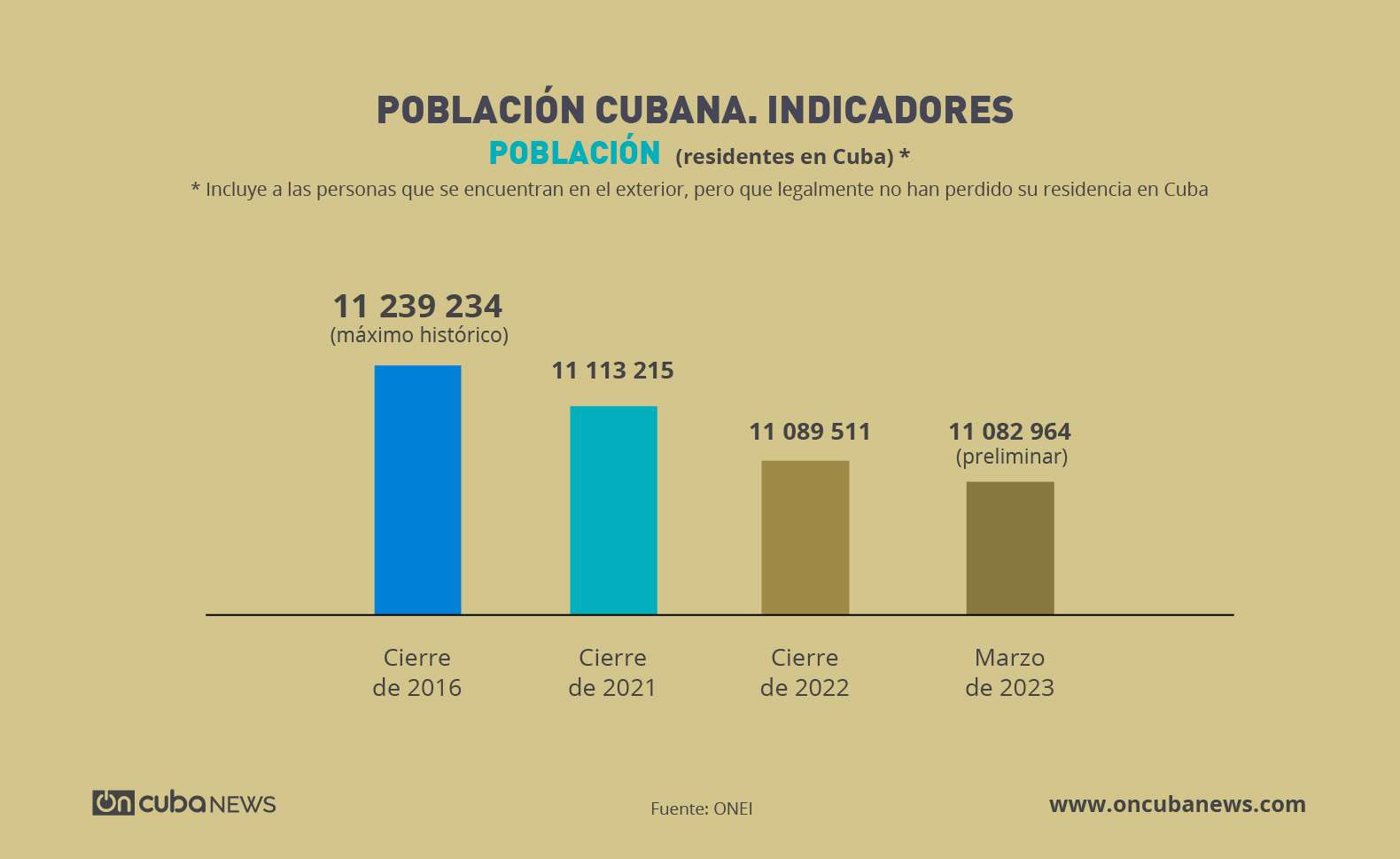
POPULATION / (residents in Cuba)*
* Includes persons who are abroad but who have not legally lost their residence in Cuba.
/ All-time maximum Preliminary / Close of 2016 / Close of 2021 / Close of 2022 / March 2023
Source: ONEI

External migratory balance
Source: ONEI

Group aged 60 and more – 22.3%
Medium age 47.6 years
Group aged 15 to 59 – 62.1%
Group aged 0 to 14 – 15.6%
Source: ONEI (2023) National Statistics Information System (SIEN), of Demography 2022
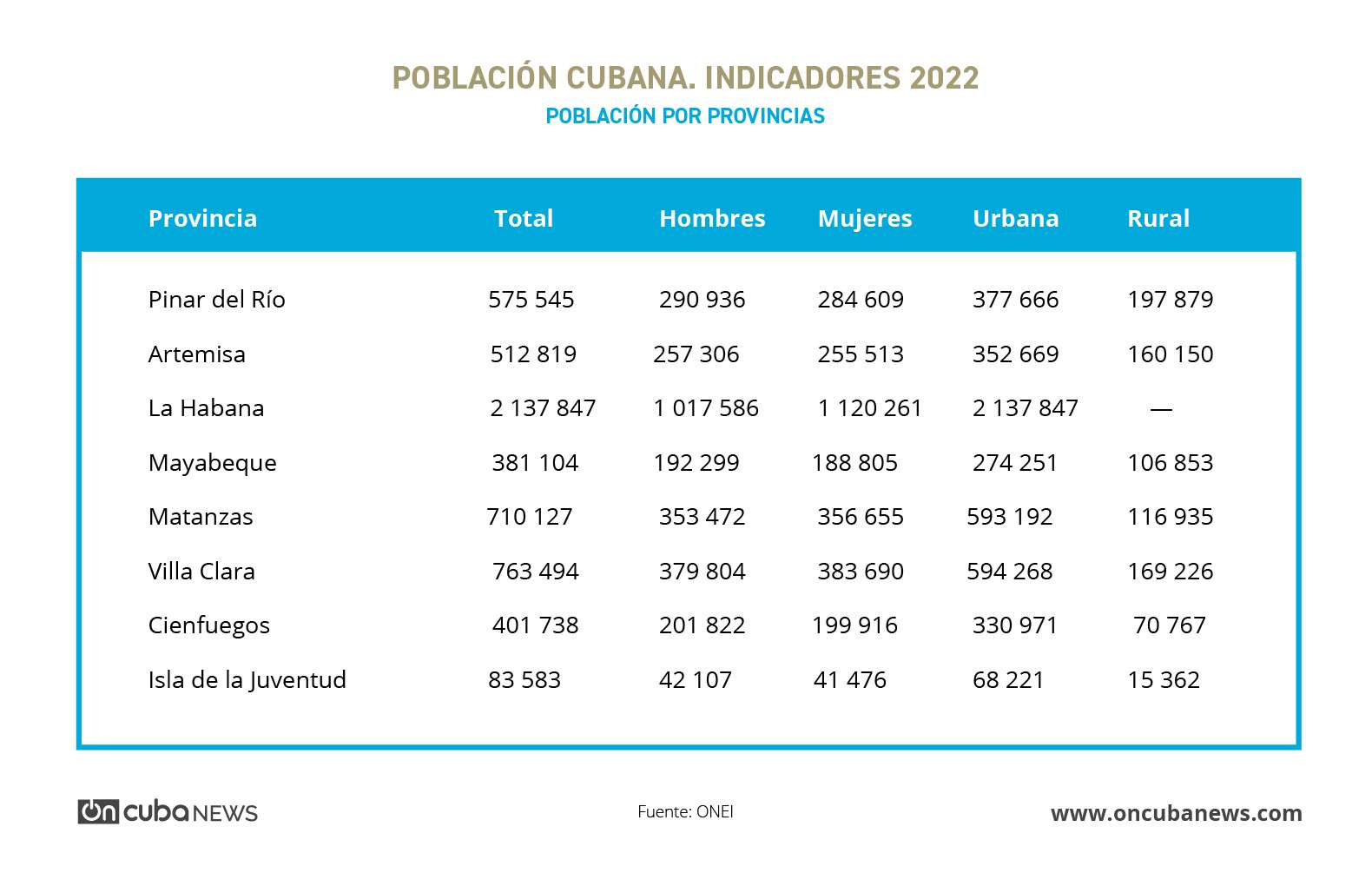
Province / Total / Men / Women / Urban / Rural
Source: ONEI

Province / Total / Men / Women / Urban / Rural
Source: ONEI
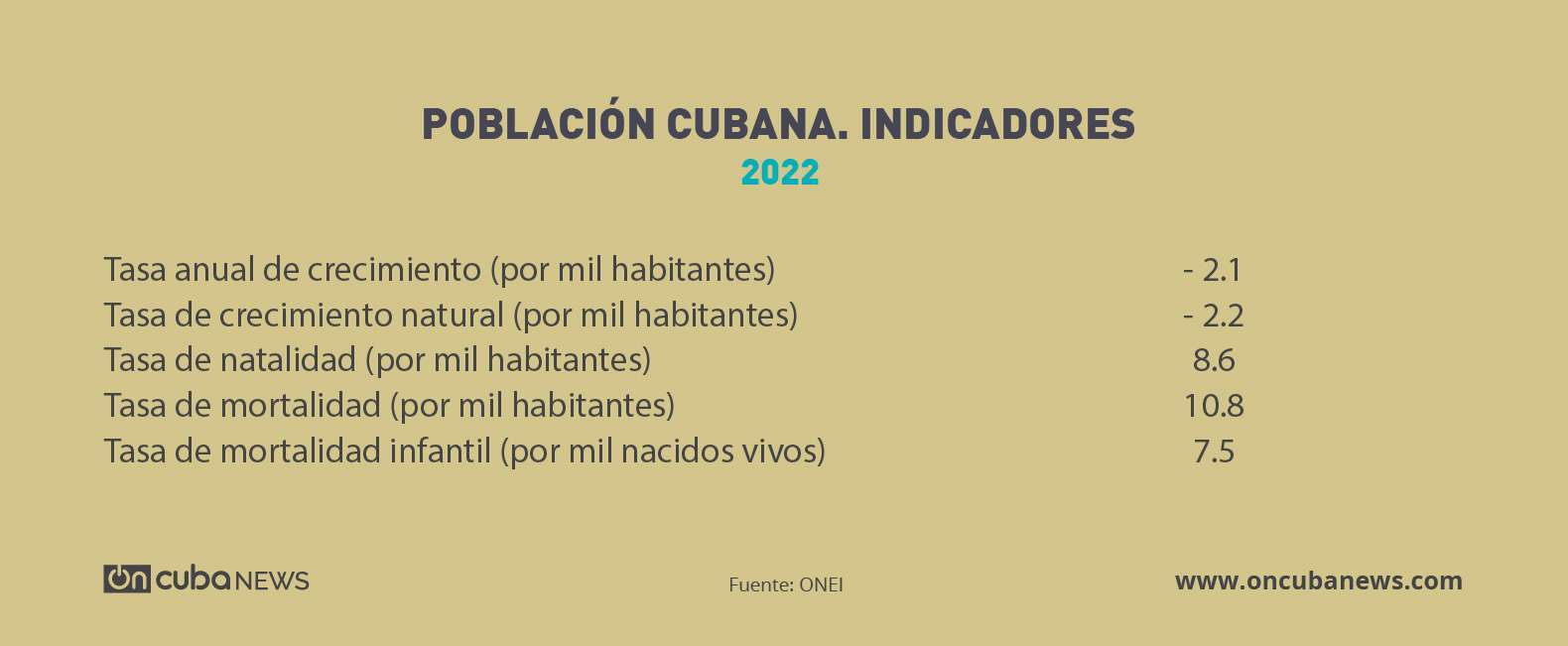
Annual growth rate (by 1,000 inhabitants)
Natural growth rate (by 1,000 inhabitants)
Birth rate (by 1,000 inhabitants)
Mortality rate (by 1,000 inhabitants)
Infant mortality rate (by 1,000 live births)
Source: ONEI
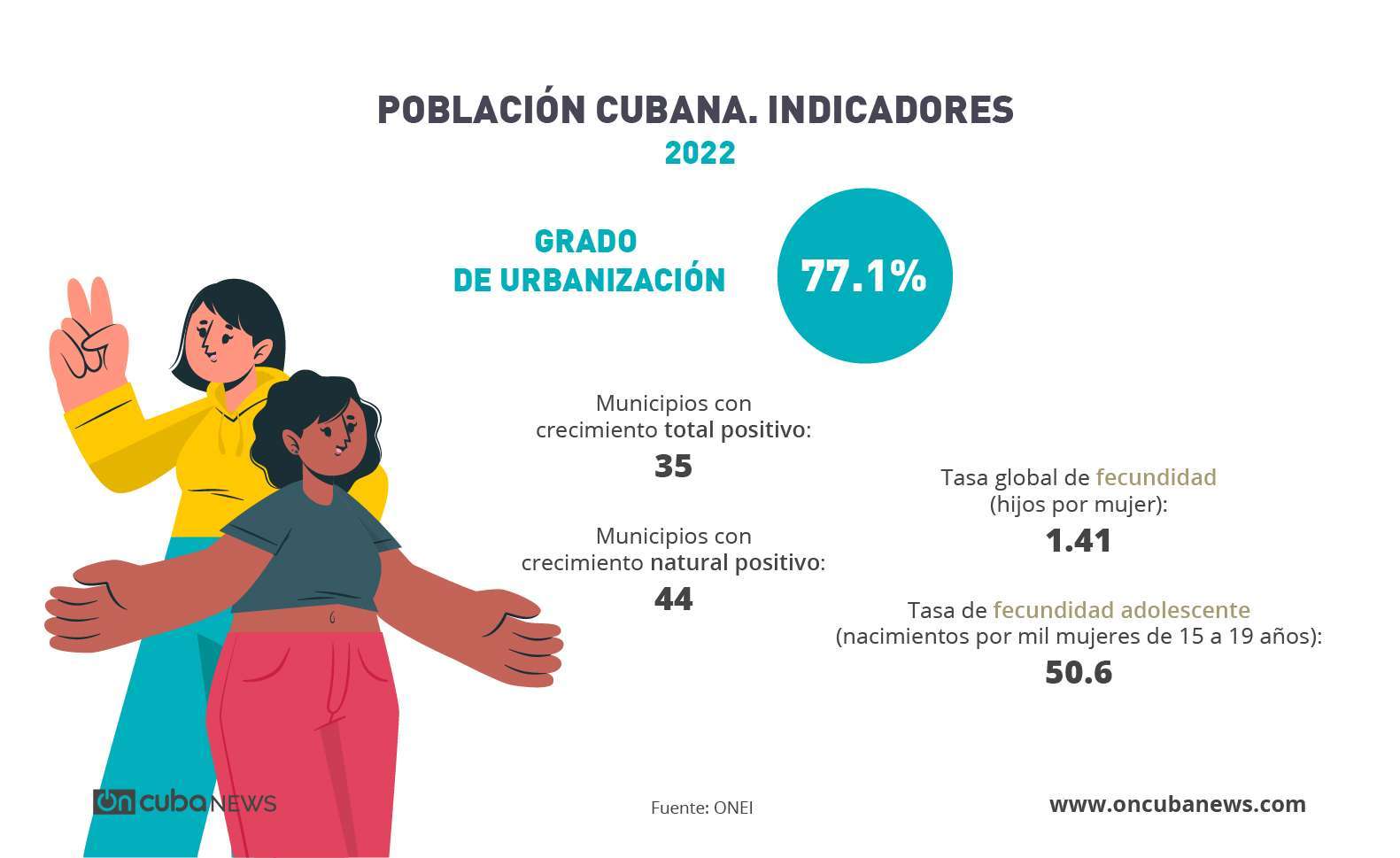
Municipalities with total positive growth – 35
Municipalities with natural positive growth – 44
Global rate of fertility (children by women) – 1.41
Teenage fertility rate (births by 1,000 women aged 15 to 19) – 50.6
Source: ONEI

DEGREE OF AGING (% of persons aged 60 or more)
Most aged province
Less aged province
Most aged municipality
Plaza de la Revolución (Havana)
Less aged municipality
Source: ONEI

Average age
Medium age
Relation of dependence (by 1,000 inhabitants aged 15 to 59)
Relation of masculinity (men by 1,000 women)
Source: ONEI
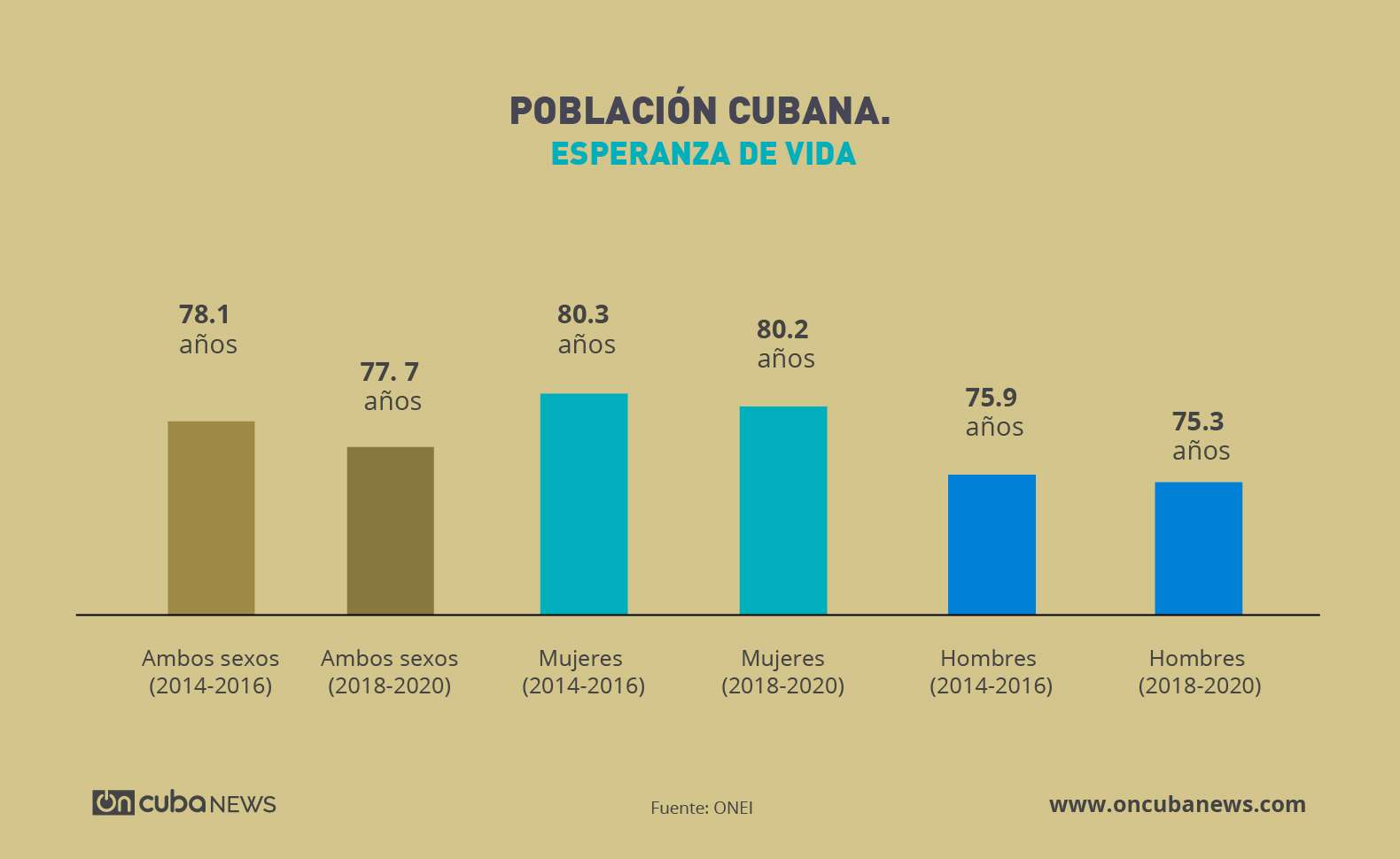
Años = years
Both sexes (2014-2016) / Both sexes (2018-2020) / Women (2014-2016) / Women (2018-2020) / Men (2014-2016) / Men (2018-2020)
Source: ONEI
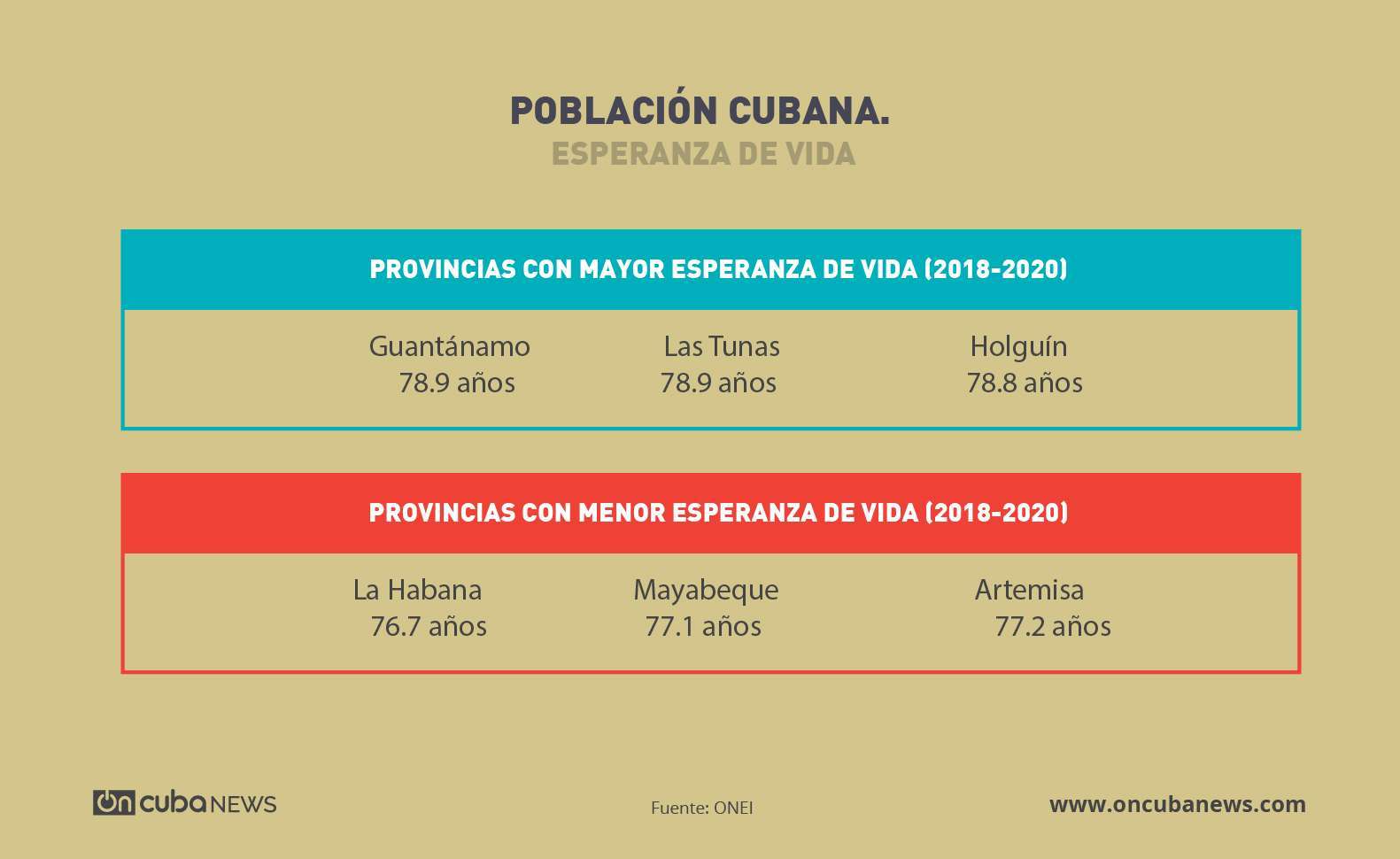
LIFE EXPECTANCY
PROVINCES WITH HIGHEST LIFE EXPECTANCY (2018-2020)
PROVINCES WITH LOWEST LIFE EXPECTANCY (2018-2020)
Source: ONEI
Glossary of demographic indicators
- External migratory balance: difference between immigration (number of immigrants or repatriates) and emigration (number of emigrants) in a given place.
- Growth rate: rate that measures the increase or decrease of the population, based on births, deaths and the external and internal migratory balance.
- Natural growth rate: rate that measures the population increase or decrease from the surplus or deficit of births compared to deaths.
- Degree of urbanization: Percentage of the urban population (those living in settlements with more than 2,000 inhabitants) with respect to the total population.
- Global fertility rate: Average number of children per woman in a country or place. When this number is below 2.1, it is below the so-called replacement fertility level, which means that the population will decline over time.
- Average age: Average age in a population. It is obtained by adding all the ages of the people that make up that population, and dividing that sum by the number of said people.
- Medium age: Value that divides the population into two equal parts. 50% of the population is below that age and the other 50% is above.
- Relation of dependency (demographic burden coefficient): demographic measure that expresses the relationship between potentially active people, by age, and potentially dependent (inactive) people. Number of dependent people (aged from 0 to 14 and from 60 and over) per 1,000 active people (aged from 15 to 59).










